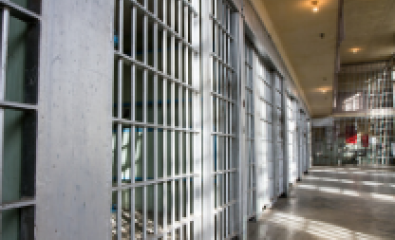
Strategies for Counties to Reduce the Spread of COVID-19 in Jails
As COVID-19 spreads across the nation and Texas, local jails are becoming hotspots in the pandemic, putting people’s lives in danger and further straining local health systems. Public health experts and physicians have repeatedly warned that if COVID-19 enters a correctional facility, it will spread much more rapidly and be difficult to contain.
Widespread outbreaks have already been reported in jails in other states including New York and Illinois. An outbreak in a jail doesn’t just affect incarcerated people and jail staff but the entire community; a flood of people who contracted COVID-19 in jail could quickly overwhelm local hospitals and healthcare resources.
Texas county officials should be doing everything within their authority to prevent a COVID-19 outbreak in their jails. Texas jails are typically filled with people who did not need to be there for public safety reasons—people arrested when they could have been written a ticket, people who have not been convicted of a crime and would be released if they had money for bail, people with mental health and substance abuse disorders who would be better served by community-based treatment. Given the extreme risk to their health by remaining in jail due to the coronavirus, their release is an urgent priority.
Texas Appleseed, the Texas Criminal Justice Coalition, and the Texas chapter of Doctors for America, have developed guidelines to prevent an outbreak of COVID-19 in Texas county jails presented in our COVID-19 County Criminal Justice Stakeholder Toolkit, featuring strategies for various stakeholders—such as sheriffs, judges, and district attorneys—to implement in order to avoid such a catastrophe.
The toolkit lays out three goals that criminal justice stakeholders should prioritize, as well as strategies to achieve each goal:
1.Reduce the jail population.
This can be accomplished by broad release on personal bond or low bond amounts for people who are in jail pretrial, who would be otherwise be released if they had money for bail. Additionally, people already convicted and sentenced to jail can be released on good time credit or to serve the remainder of their sentences at home.
2.Reduce the churn of people in and out of jails.
Law enforcement officers can issue citations instead of making custodial arrests, in situations where public safety does not require an arrest. Courts can also help reduce unnecessary arrests by recalling or suspending warrants for non-violent offenses.
3. Provide healthcare and proper hygiene for free to those who remain in jail.
Those who remain in jail must have access to hand sanitizer, soap and handwashing; be allowed to social distance from other inmates in communal areas; and have accessible, quality healthcare provided for free.
All Texas counties should take immediate and decisive action to prevent a widespread COVID-19 outbreak in their jails before it’s too late. Call or email your sheriff and other county officials and tell them you support people’s immediate release from jail. Tell others you know about the need to protect and release people in jails.
To learn about more ways that counties can do this, check out the full toolkit here: http://bit.ly/COVID19TexasToolkit.